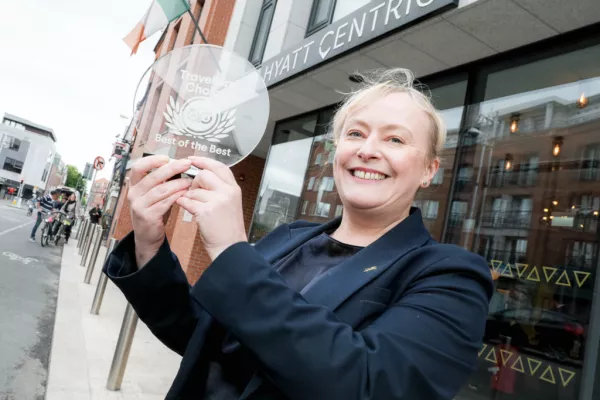The world of fine dining doesn’t change much. If you need evidence, look to the Michelin Guide's 2017 lists, where the list of three-star places looks the same, pretty much, as it did the year before, and the year before that, and so on.
So it was audacious of Tiger Beer—the Singapore-based beer company that’s making a big push into the United States—to try to shake things in the upper echelons of the restaurant world. They did so by bringing together two unlikely chefs in a series of dinners: Christopher Kostow, whose Restaurant at Meadowood in Napa Valley, Calif., is a constant on the Bay Area’s Michelin three-star list; and Chan Hon Meng, owner of Hong Kong Soya Sauce Chicken Rice and Noodle, which shocked a lot of the world (and his staff) when the hawker stall garnered a Michelin star earlier this year.
The two chefs teamed up to cook over three nights at Indochine restaurant in downtown Manhattan; the run ends on Dec. 9. (Don’t think about trying to get into the event, which has been unofficially billed as a muti-star Michelin meal; the line outside was as if Hamilton had announced an evening performance at the restaurant.) It was Chan’s first trip to the U.S. Generally too busy to travel, he starts work at 5 a.m. every day at his stall, where lines averaged a two-hour wait before the news of his Michelin star broke; now it stretches to three hours. Chan may sell the recipe for his chicken for $2 million.
Lowbrow Delights
Kostow and Chan’s meal, labeled Tiger Streats (for street eats), was all about high and low. Half of each table in the space (which was festooned with paper flags) was set with water glasses; the other half with plastic cups. The chefs divided duties for the three-course dinner. The first dish was Kostow’s: He prepared whelk lasagna, a mousse of shellfish layered amid seaweed pasta, with roasted broccoli and whelk broth. If this sounds weird, it was—not lacking in taste, but not the crowd-pleaser. The second course, which Chan served family style, was a platter of his famous braised chicken. Drowned in a soy sauce-based lacquer and served with fragrant long-grain rice, it was richly flavored and sticky, hard to eat, and delicious. Hands down, it was the highlight of the meal.
Most fine-dining chefs, especially ones as talented as Kostow, would be vexed that their dish wasn’t the best. Not Kostow. “I believe there’s not intrinsically greater value in fancy food. There’s nothing inherently great about fine dining,” he told me. “I’d rather have a good burrito than mediocre foie gras.” He continued: “Who wants to eat whelk lasagna when you can eat that chicken?” Not that he set out to make an inferior dish; he had just decided to let Chan be the star. The older, energetic chef is half the size of Kostow, speaks English via a translator, and is most at home when he’s whacking his mahogany-colored chickens into pieces with a cleaver.
High Strategy
Kostow believes that you have to work hard to make food that justifies that high price point. “We’re in northern California, where we have people with a lot of disposable income and an inclination towards creativity, maybe more so than in New York,” he said. “People there will take chances. But that doesn’t mean that you don’t have to push your food a lot harder than if you were doing something simple.” The tasting menu at Meadowood is $330 per guest; the counter menu is $500 each. The chicken at the hawker stall costs about $2 Singapore ($1.40) per plate.
Kostow and Chan collaborated on dessert, coconut pudding with glutinous rice balls and red beans, via Skype. Kostow made the pudding; Chan prepared the rice balls and red bean sauce. Chan told me, through his translator, that in China the round balls represent working “happily and merrily” together. Kostow told Chan that he wanted to open his own kelp lasagna stall next to Chan’s chicken and rice joint in Singapore. Chan chuckled. “You’ll steal all my business,” he said. Everyone laughed at that.
News by Bloomberg, edited by Hospitality Ireland









